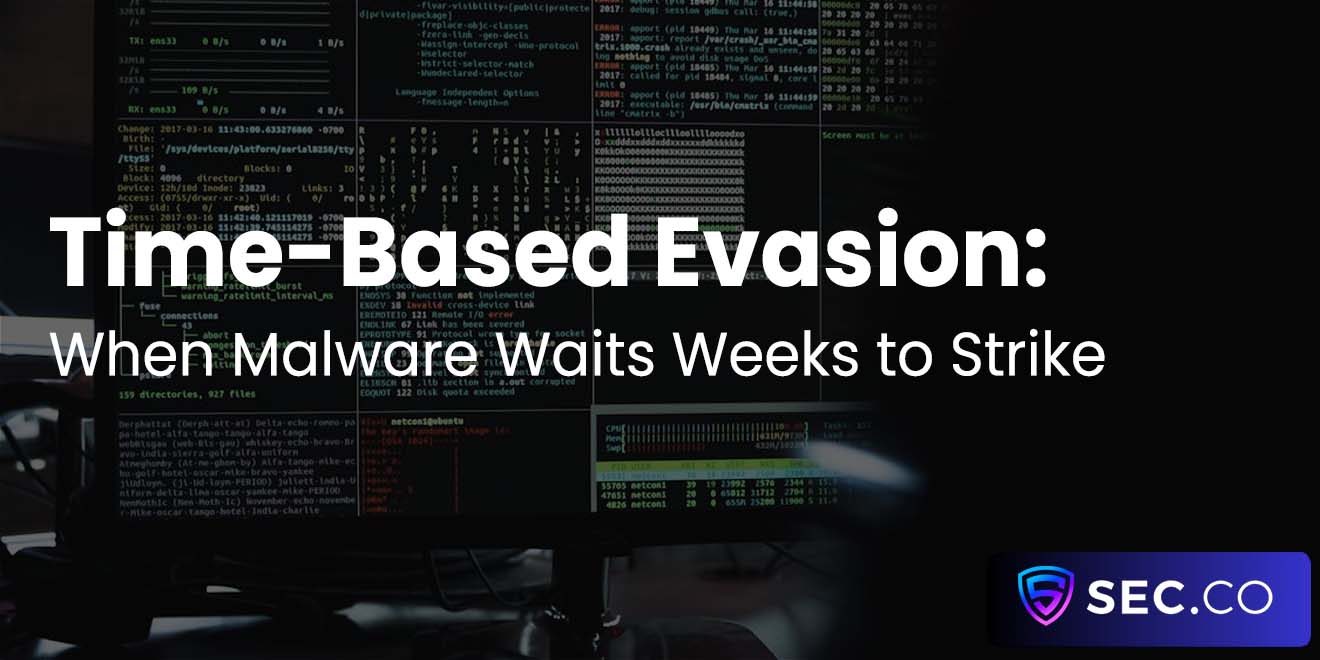Ghost Dependencies: How Stale Code Can Still Be Malicious
Software dependencies age the way bread does in a forgotten pantry, slowly getting fuzzy around the edges while everyone swears they will clean up on Friday. The trouble is that stale code can invite trouble even when no one is touching it.
In this guide, we unpack ghost dependencies —the packages that linger in your builds long after their best-by date—and explain how attackers can turn them into quiet footholds. This discussion sits squarely in the world of cybersecurity & cyberdefense, but we will keep the tone human, the advice practical, and the horror only mildly spooky.
What Are Ghost Dependencies?
Ghost dependencies are inactive or abandoned packages that still ride along in your builds. They are the libraries you pinned five quarters ago, the transitive add-ons that arrived through another library, and the utilities that no one admits installing.
They feel harmless, since nothing appears to change. In reality, they remain part of the trusted supply chain. They influence compilation, runtime behavior, and packaging. If the code executes, or shapes what does execute, it can still bite.
Think of the dependency graph as a family tree with a few relatives no one visits. You may never call them directly, but their DNA persists. A renderer drags in an image parser, which drags in an outdated archive reader, which drags in a small convenience library written in a weekend. The convenience library has not released a new version in years. It will not raise its hand. It will simply exist, and that is enough.
Why Stale Code Does Not Mean Safe Code
Inactivity is not a security property. Stale packages can hold unfixed vulnerabilities forever. They can also serve as trust anchors that attackers learn to imitate. If a dormant project is popular, a patient adversary can buy a lookalike domain, a confusable author handle, or a nearby package name. When developers accept the old package as part of the furniture, checks become lazy, and the chance of a swap increases.
The longer something remains unchanged, the more your organization forgets why it was added, who owns it, and how to remove it. That fog is an attacker’s favorite weather. It encourages assumptions, and assumptions make excellent camouflage.
The Illusion of Inactivity
When builds pass and dashboards stay quiet, teams assume the old code is inert. They imagine it sealed inside a jar. Yet compilers link it, interpreters import it, and packaging systems ship it. An attacker does not need to modify your repository when they can modify what your repository depends on. The operative word is trust. Silent code is still trusted code.
Hidden Trust Paths in Package Ecosystems
Modern ecosystems create long chains of transitive trust. You may vet your direct dependencies carefully, then inherit dozens more through them. Each node in the chain becomes a potential point of substitution. Even if no one updates the old package, a new lookalike can enter the search path, the mirror, or the resolution algorithm. If the lockfile or resolver lets it through, it will feel right at home.
How Attackers Exploit Staleness
Attackers like neglected gardens. They do not need fireworks. They need patience, naming tricks, and a nudge.
Namespace and Typosquatting Resurrections
A package with a sleepy maintainer is easy to impersonate. Adversaries register a name that looks nearly identical, perhaps with a swapped character or a common prefix. Developers hunt for a quick fix, hit install, and invite a stranger to the party. The original package never changed, yet the attack succeeded because attention wandered.
Abandoned Maintainer Accounts
Old projects sometimes keep a single maintainer account with recovery tied to an inbox from a university or a vaporized startup. If that account is taken over, the attacker inherits trust. They can publish a new version that aligns with signatures and naming histories. The change feels legitimate, and the code rolls downstream without alarms.
Dependency Confusion in the Attic
Private packages that share names with public ones create routes for confusion. If your tooling does not reliably prefer internal sources, a public package with the same name can slip into builds. Stale internal code invites this risk because no one remembers to reaffirm the source priority. The ghost remains, and the impostor wears its sheet.
Version Pinning That Fossilizes Risk
Pinning versions can protect you from surprise changes, but extreme pinning can trap you with known flaws. A vulnerable release remains forever, and mitigations that rely on updated dependencies never arrive. Attackers love targets that cannot move. Motionless prey is easier to study and predict.
Detecting Ghosts in Your Dependency Tree
You cannot defend what you cannot see. Ghosts prefer dim light. Your first task is brightness.
Start With a Living Inventory
Create an inventory that refreshes automatically and tags each dependency with source, maintainer, license, and age. The inventory should cover direct and transitive entries, build tools, and test fixtures. If something ships with your artifact, include it. Treat the list as a living document that your pipeline checks relentlessly. The goal is simple clarity. Know what is present, why it is present, and who will take the call if it misbehaves.
Combine Static and Dynamic Signals
Static analysis will map your graph and highlight versions. Pair that with runtime observation. Which code paths execute in production, which libraries load, and which permissions they request are all signals of practical risk.
A package that never runs is not automatically safe, but it becomes a lower priority. A library that opens network sockets or touches the filesystem deserves immediate daylight.
Measure Reachability and Blast Radius
Reachability asks whether vulnerable functions are callable within your application. Blast radius asks what happens if they are compromised. Old utilities that manipulate archives, parse media, or spawn subprocesses often sit close to the edge of danger. If a ghost can unpack, decode, or evaluate, it should never be invisible.

Making Stale Safer Without Breaking Everything
Modernization is a journey that competes with feature work. Security must propose moves that keep the lights on.
Update With Purpose
Update the top of the tree first, then move downward. Each modernized parent can lift multiple children. Prefer maintained forks or successors when a project has gone quiet. If the change is large, place it behind a feature flag or deploy it to a canary environment. Let reality confirm your plan. Progress that sticks is better than heroics that roll back at midnight.
Quarantine the Unknown
When you cannot replace a ghost, isolate it. Run it in a minimal container. Drop filesystem and network permissions that are not needed. Place it in a process boundary, then watch it like a hawk. Log its calls, set strict timeouts, and alert on anomalies. If the code misbehaves, you want speed and evidence, not speculation.
Lockfiles With Intent, Not Neglect
Use lockfiles to pin today’s truth, then refresh on a schedule that you can actually honor. Tie refreshes to patch windows and service level objectives. When the resolver proposes a change, demand that it cite a reason you can read. The point is not to freeze forever. The point is to move carefully, with records that an auditor can understand.
Put Humans Back in the Loop
Automated scanners are fast, yet they do not produce outcomes. Assign a clear owner for every critical dependency and record that ownership. Make it part of performance reviews and on-call rotations. People care more about what they own. Ghosts shrink under direct responsibility.
Governance That Keeps Ghosts From Appearing
Culture and procurement shape the dependency graph long before engineers type install. A little forethought saves a lot of incident response.
Choose Dependencies Like You Hire People
Evaluate maintainers for activity, responsiveness, release cadence, and roadmap. Prefer communities over solo projects for critical paths. Read the contribution guidelines and check whether security issues have a documented path to disclosure. A crowded kitchen is louder, and it usually smells like smoke sooner.
Practice Inventory Hygiene
Require an approval step for new dependencies. Explain why the existing toolbox is not enough. Short explanations encourage honest tradeoffs. If teams must justify each addition, they will choose carefully, and old packages will retire faster. Hygiene is not glamour. It is sweeping the floor so you do not slip later.
Plan for Sunsets
Every dependency should have an exit plan. Document how to remove it, what replaces it, and how long the deprecation period lasts. Sunset plans keep software from turning into a museum. They also make it easier to eject a package the moment it turns suspicious.
The Role of Automation and AI
Automation can triage noisy graphs, cluster similar findings, and surface the few changes that deserve human review. It can match package names against confusables, watch for maintainers who suddenly rotate, and compare new releases against historical behavior.
AI can help spot outliers in code structure or release timing that suggest tampering. The trick is to treat suggestions as leads, not verdicts. Machines propose, humans dispose. That balance keeps speed without handing over the keys.
Conclusion
Ghost dependencies thrive on silence, inattention, and a sprinkle of magical thinking. They are not evil by nature, yet they make evil convenient. If you build a living inventory, pair static truth with runtime truth, practice isolation where needed, and set ownership that sticks, the attic loses its cobwebs. The result is software that ages with grace. Attackers hate tidy houses. Keep yours well lit, sweep often, and you will hear the floorboards creak a lot less.
Trusted by the Web Community
See what we written lately
Request an invite
Get a front row seat to the newest in identity and access.
















